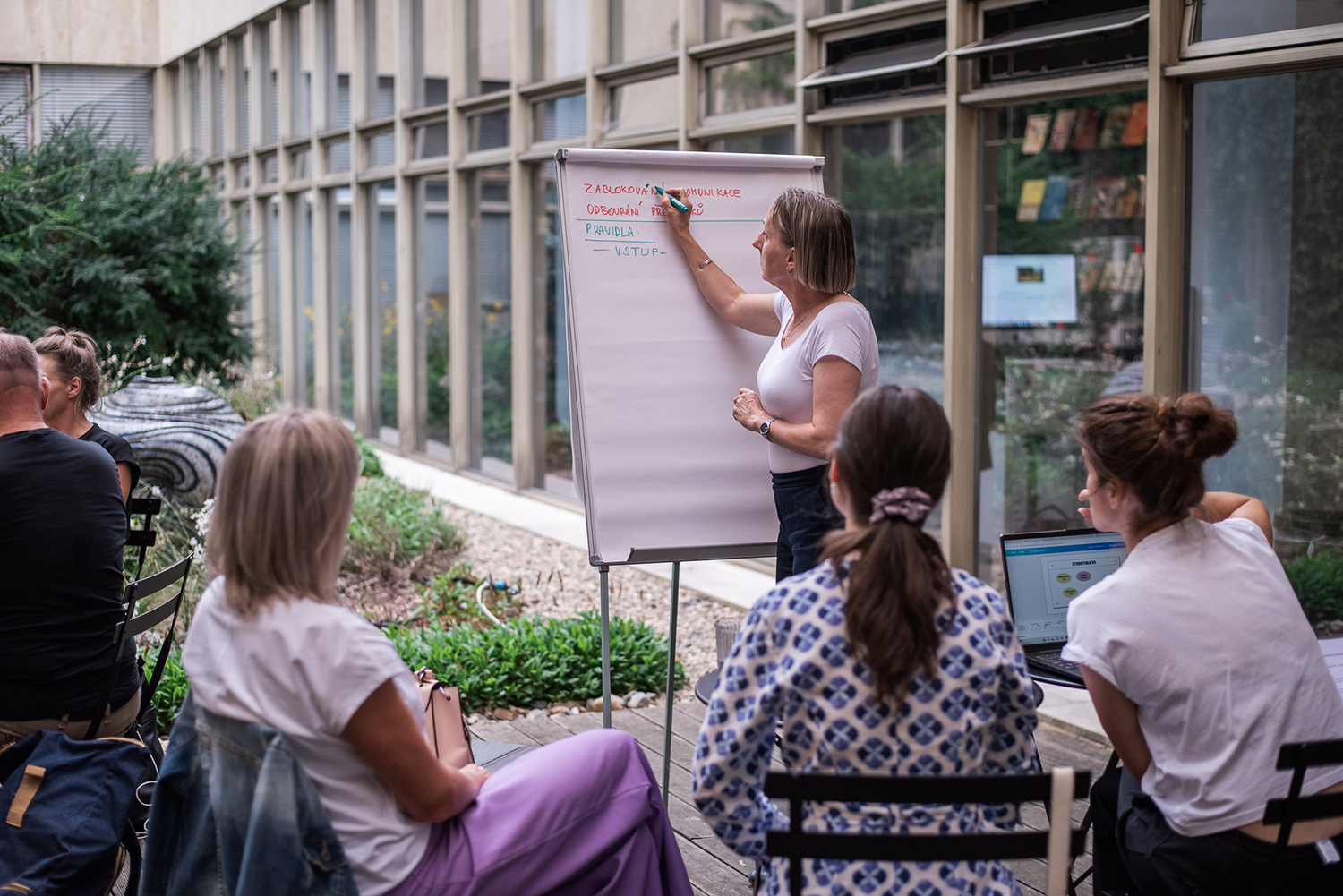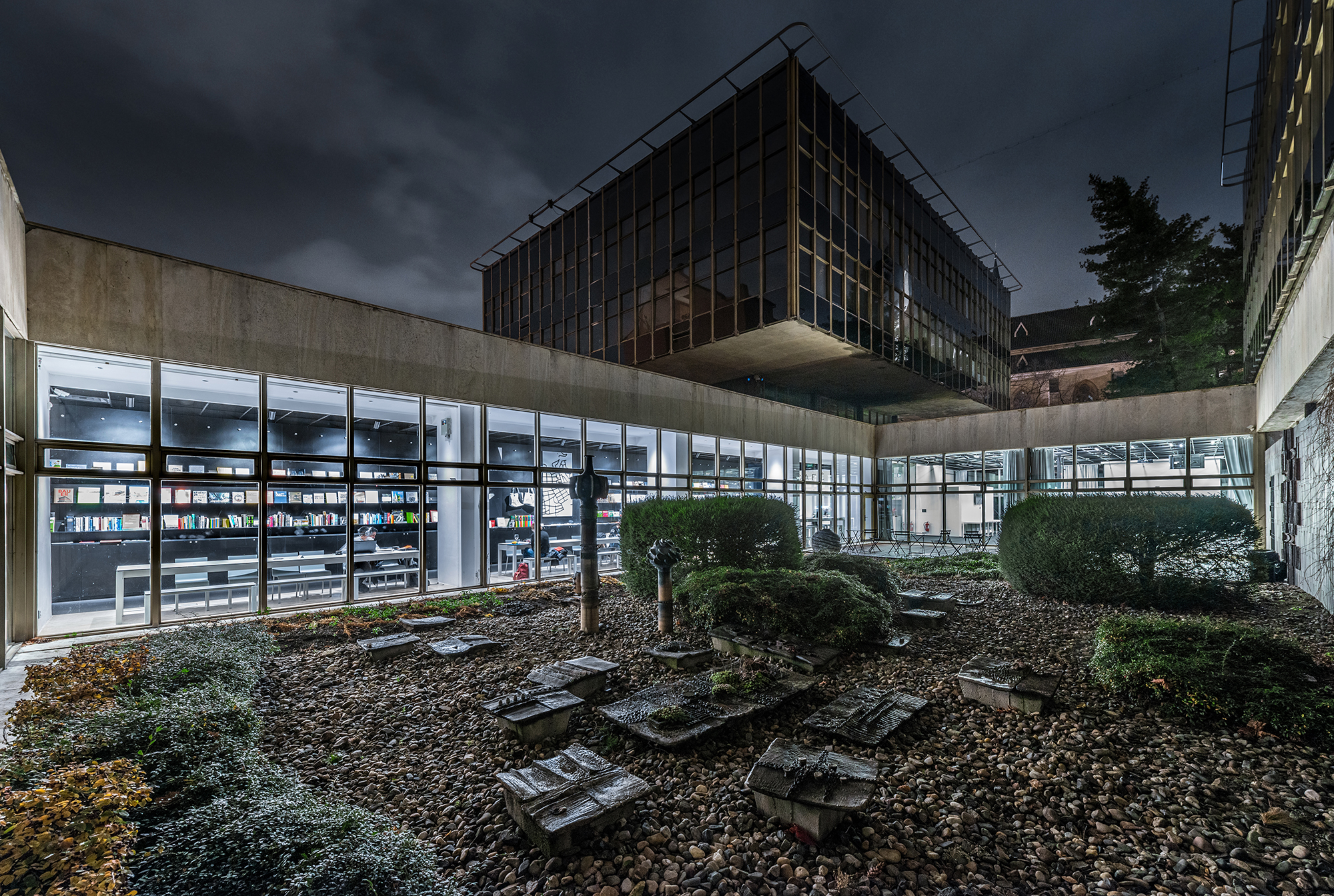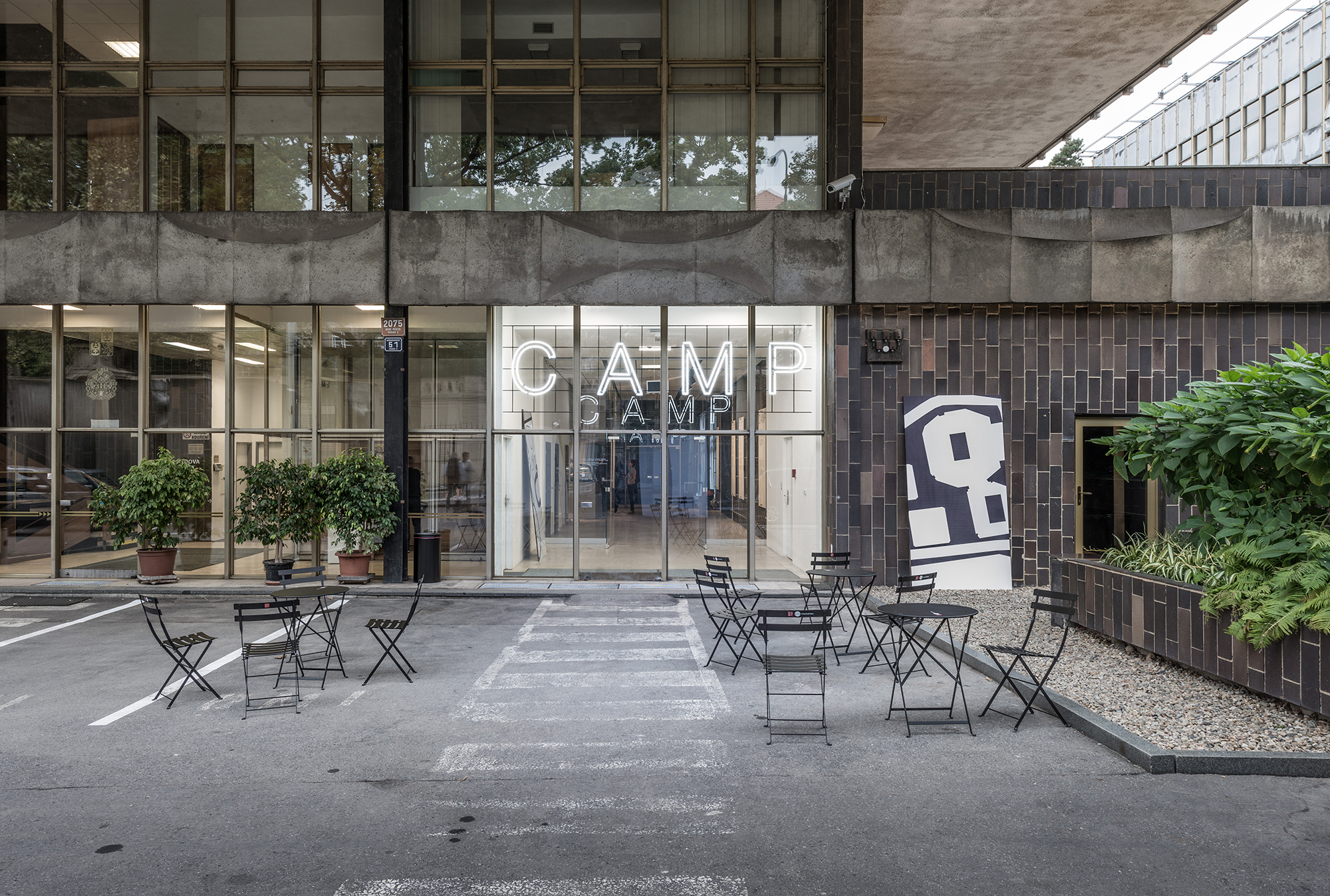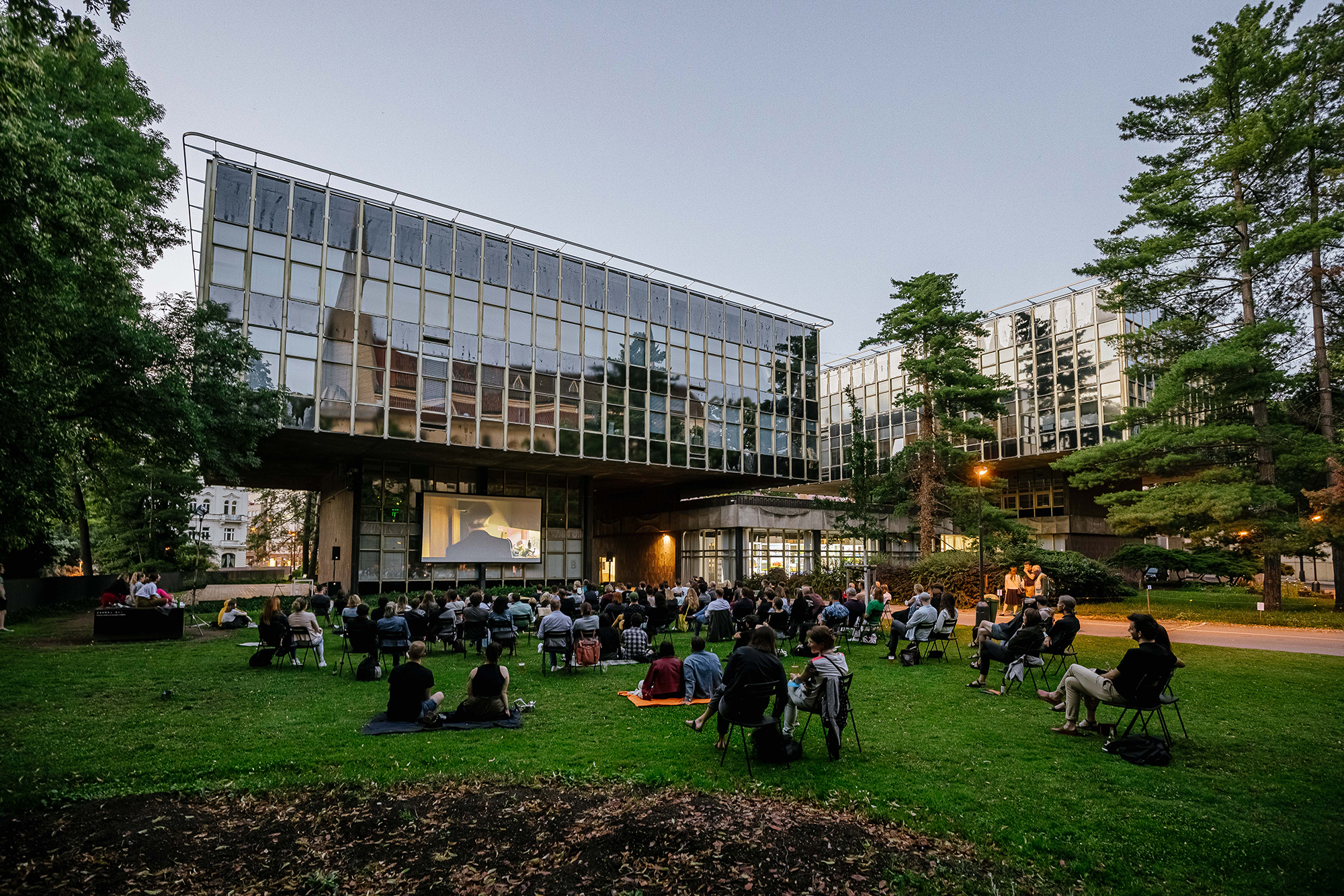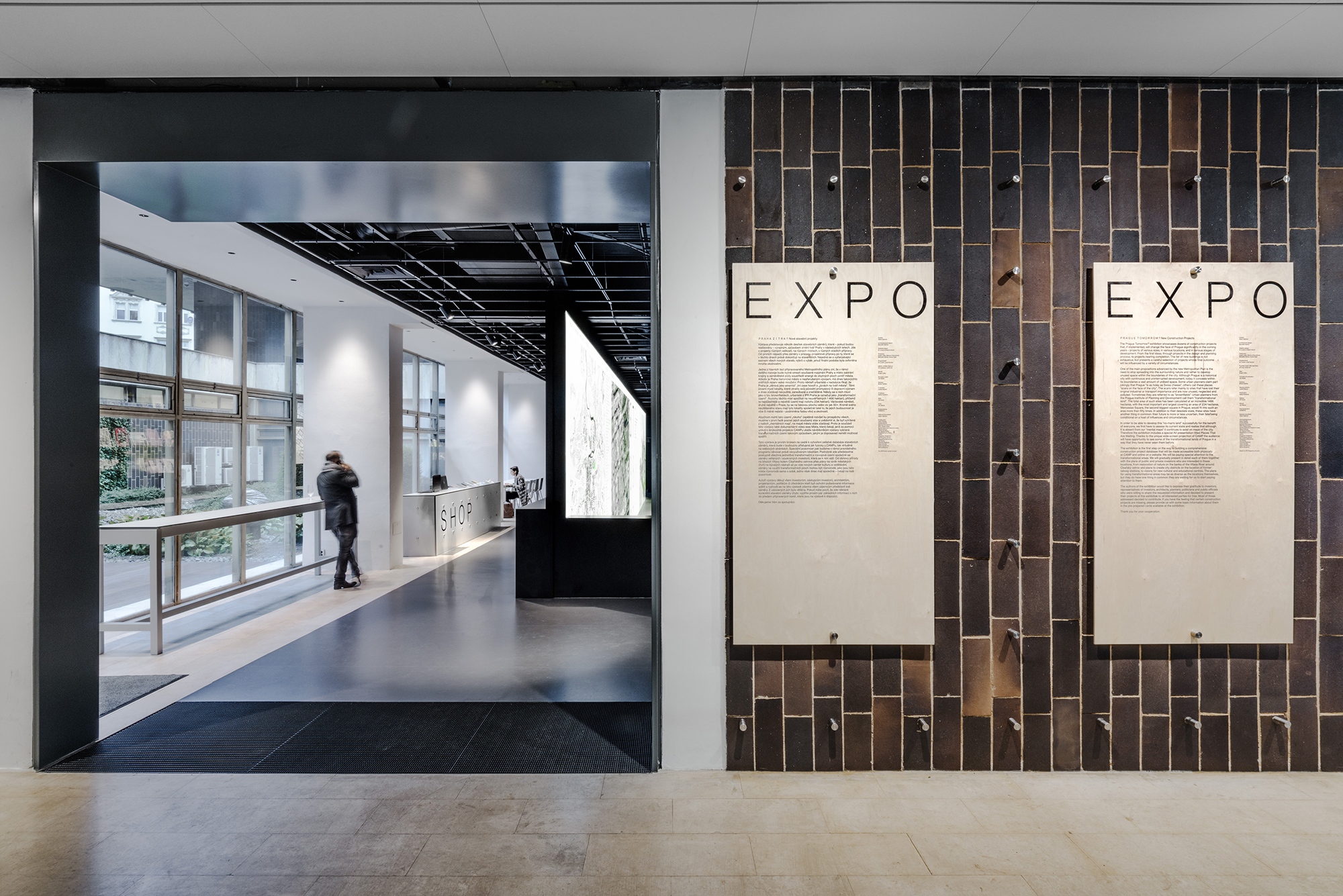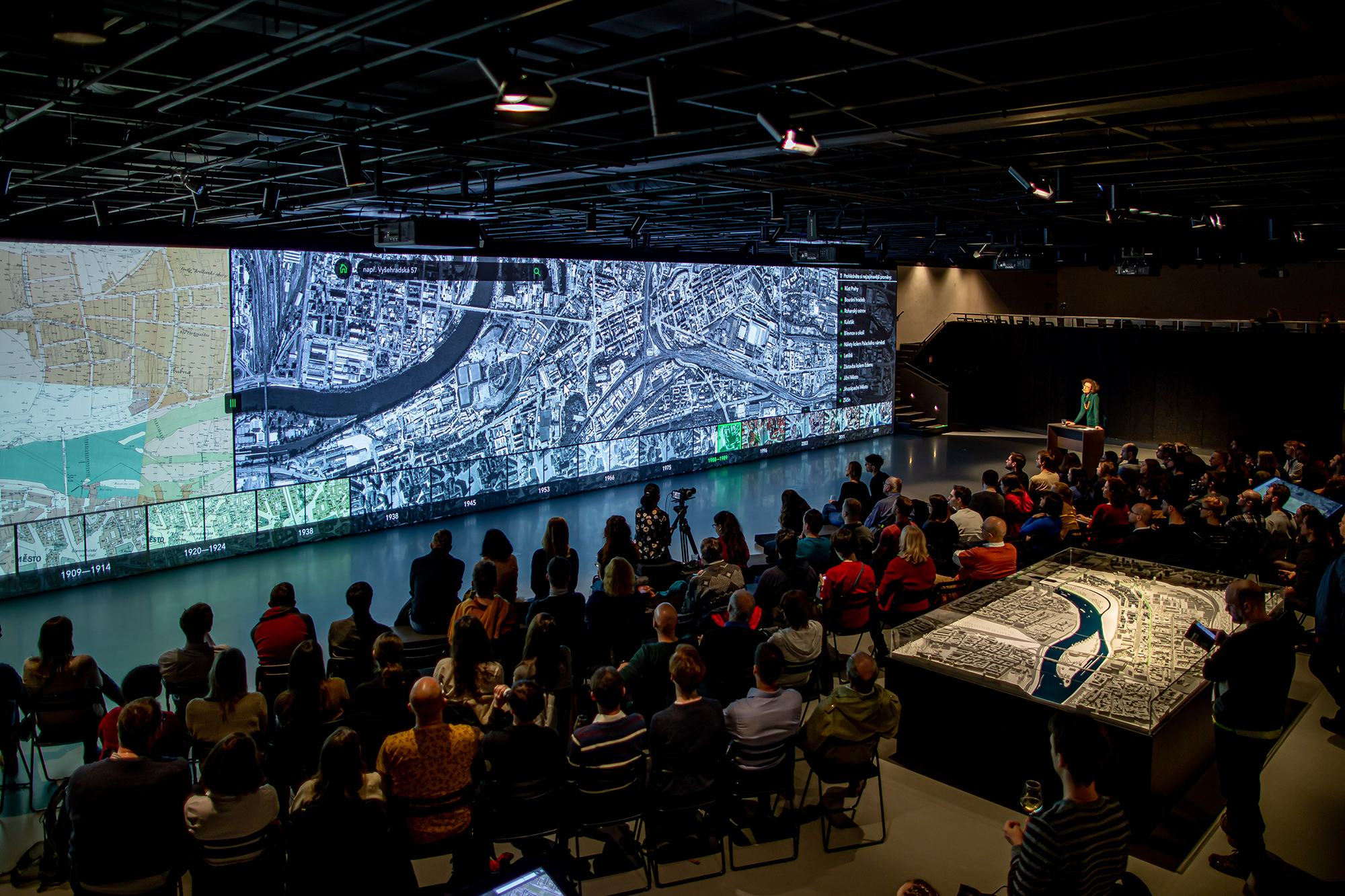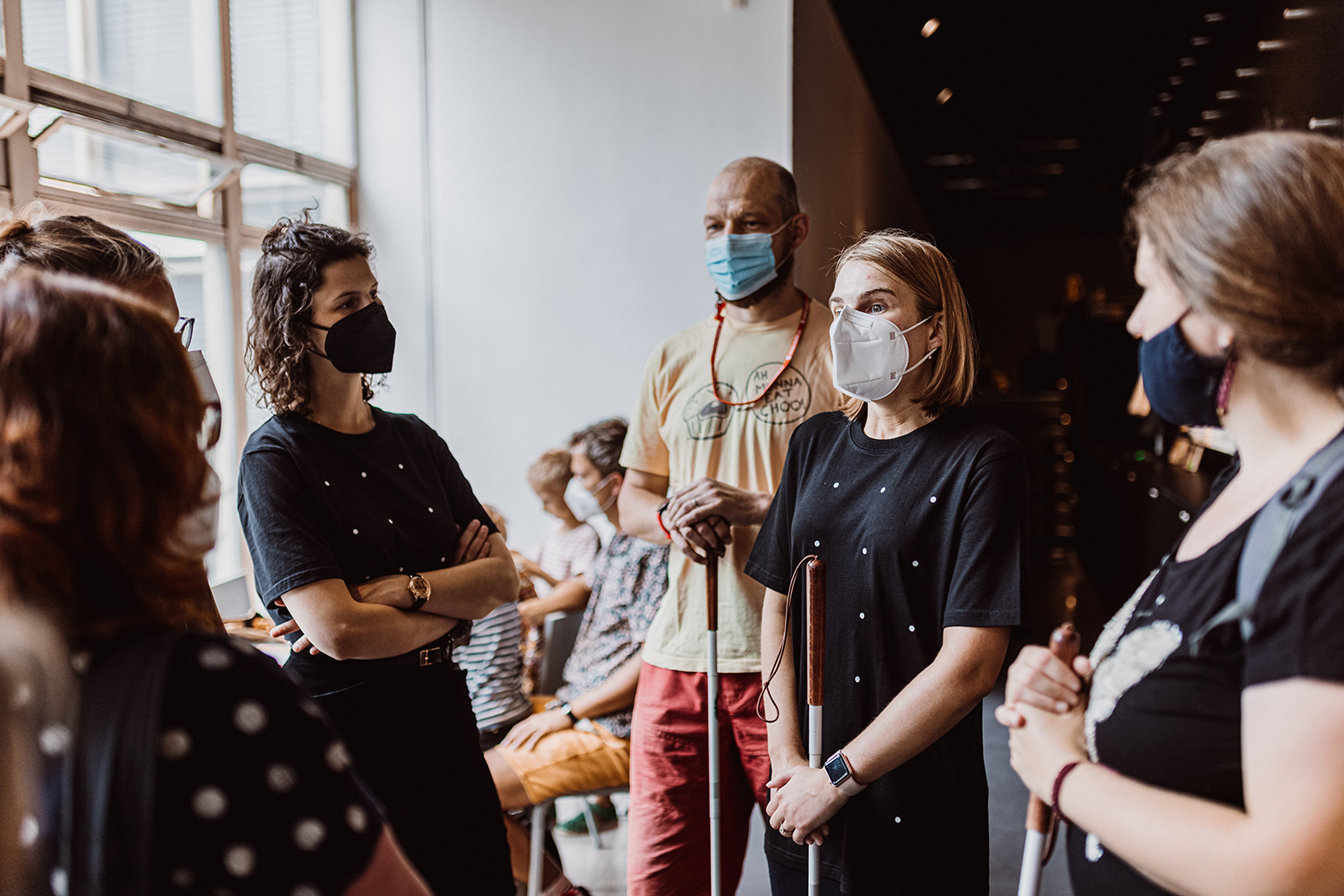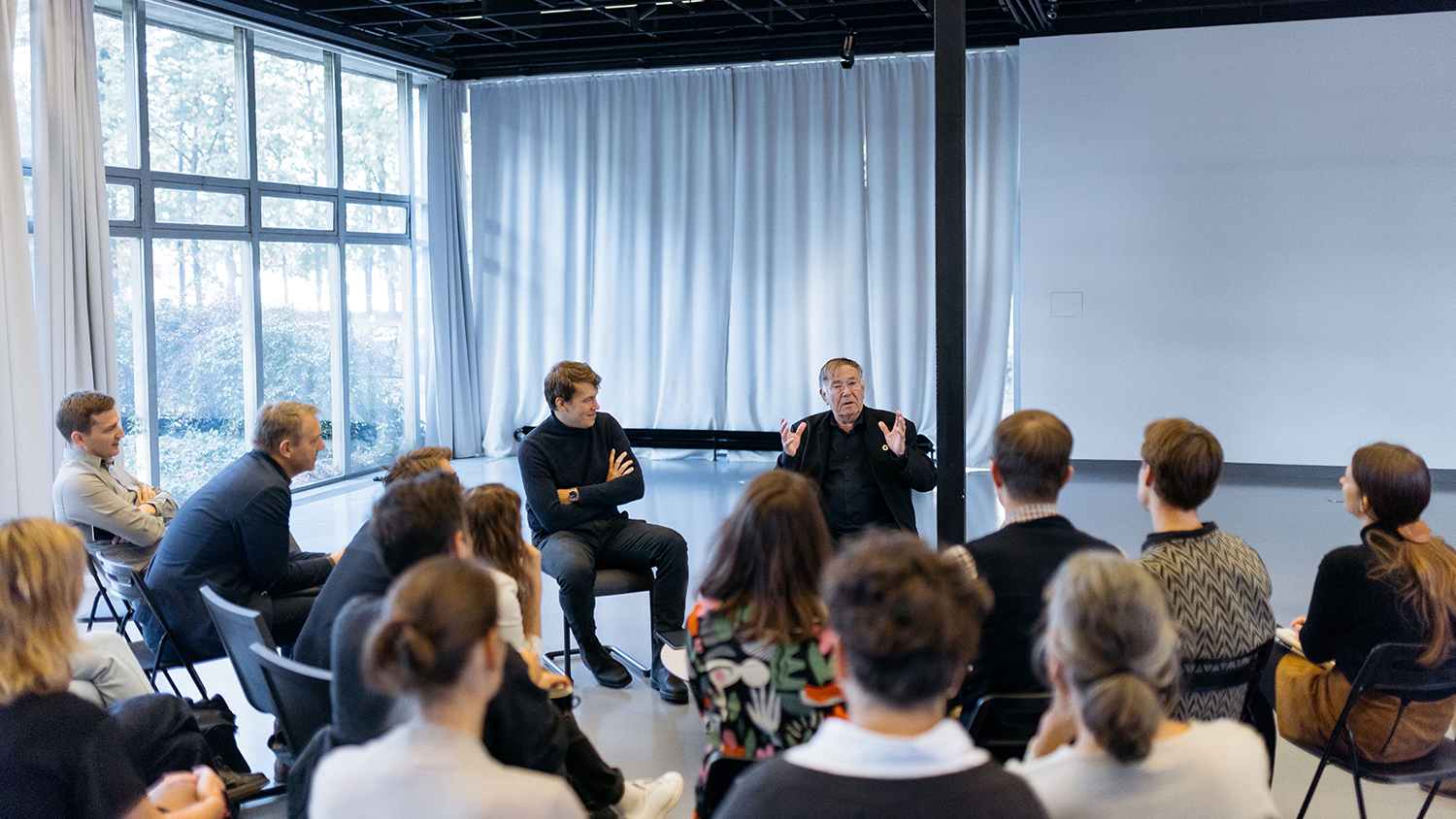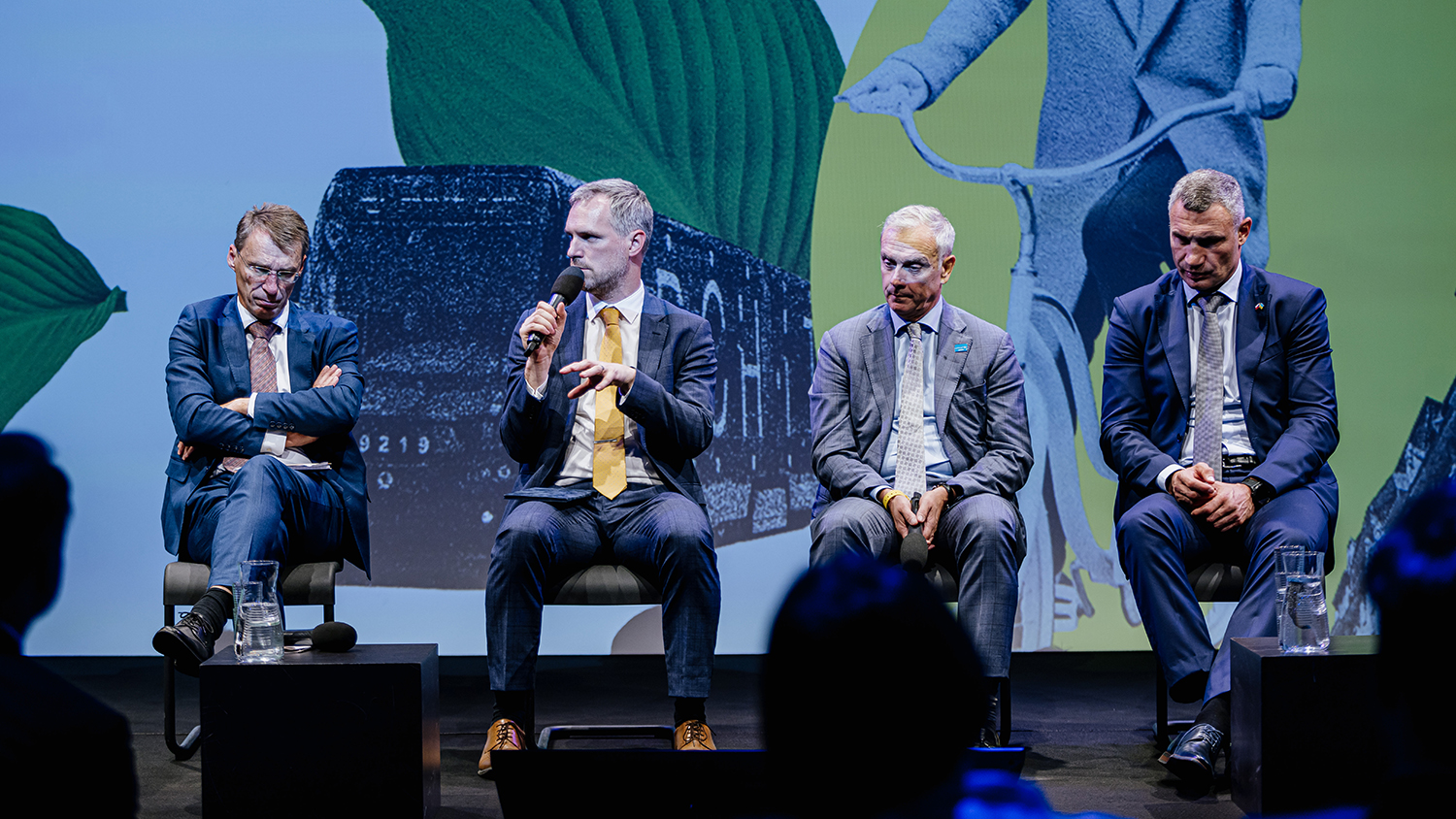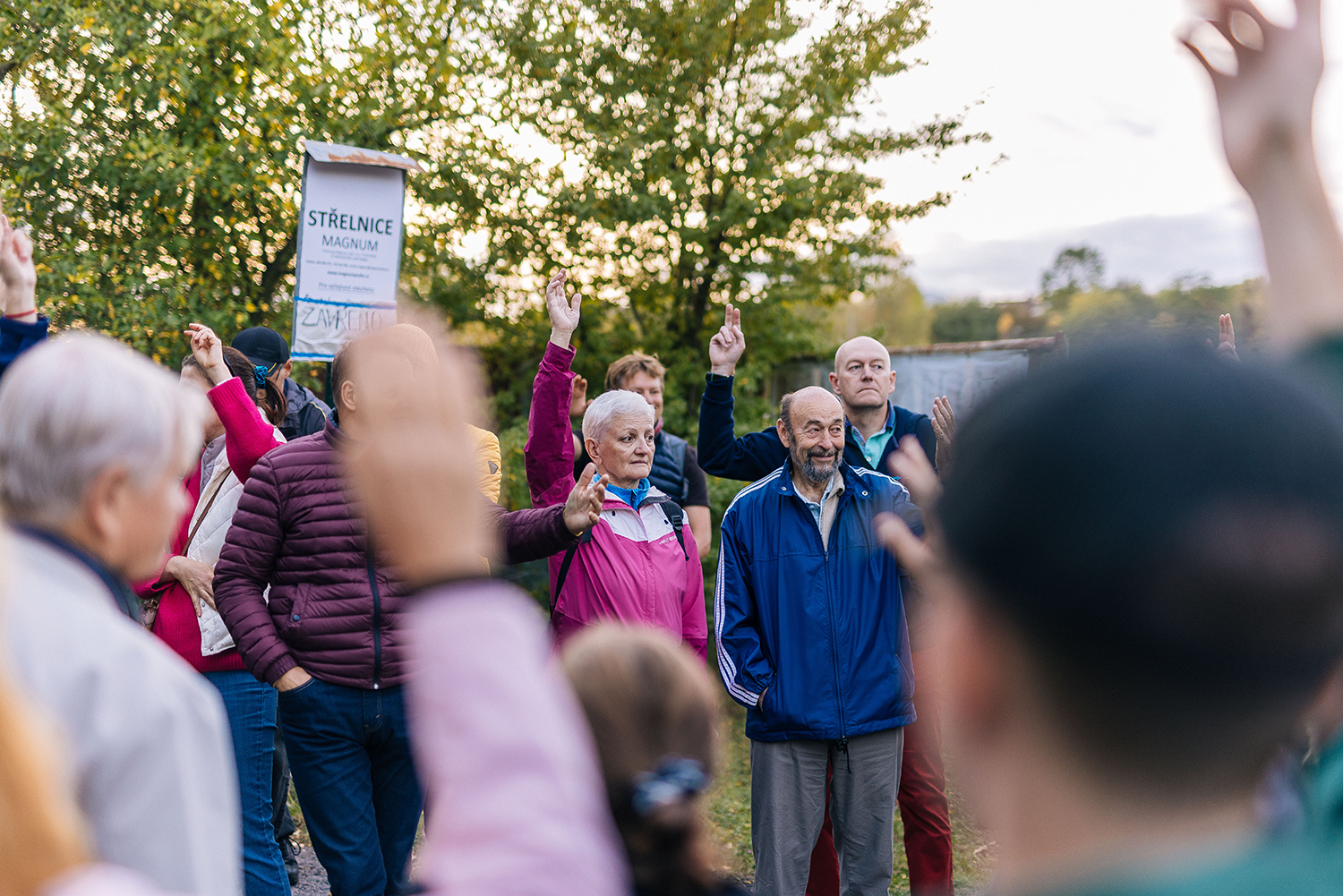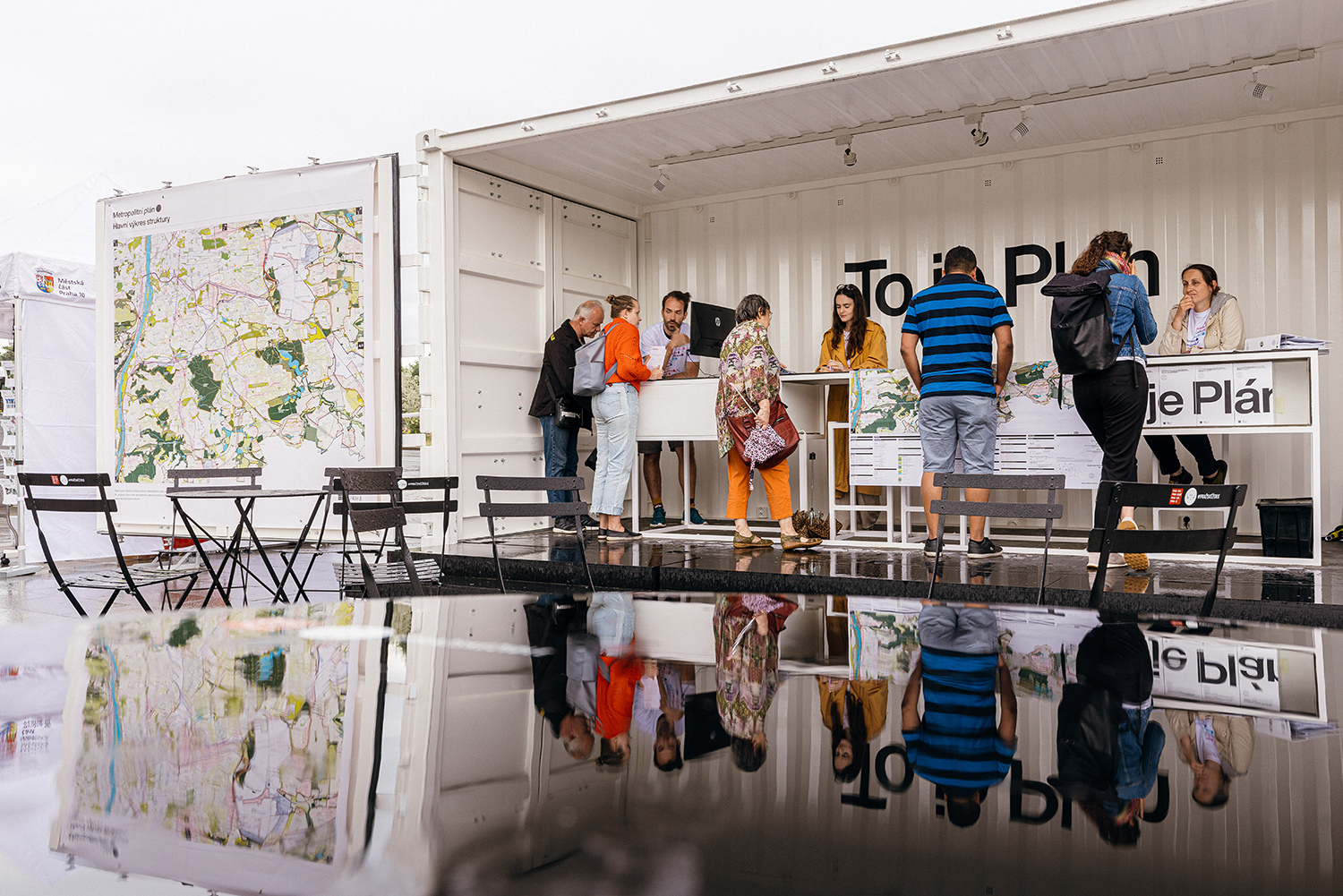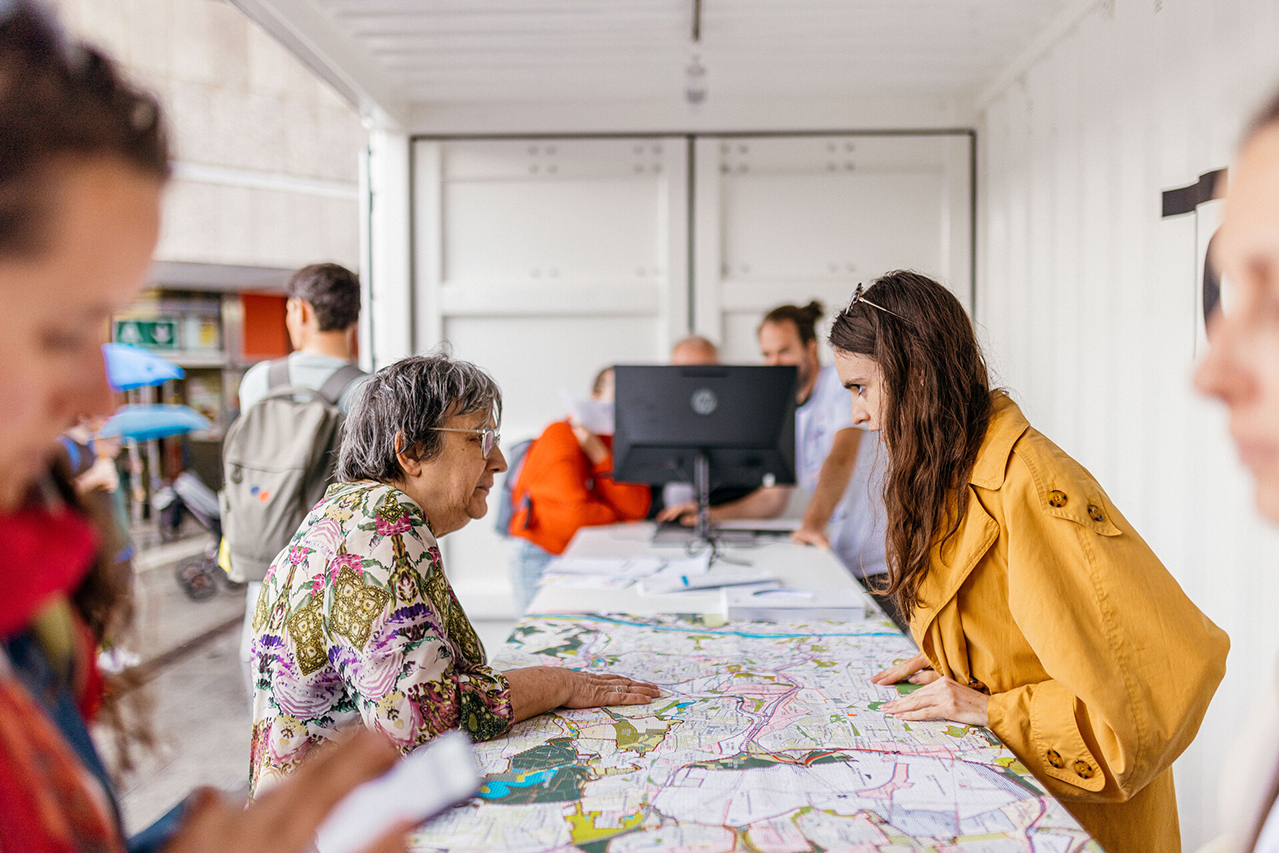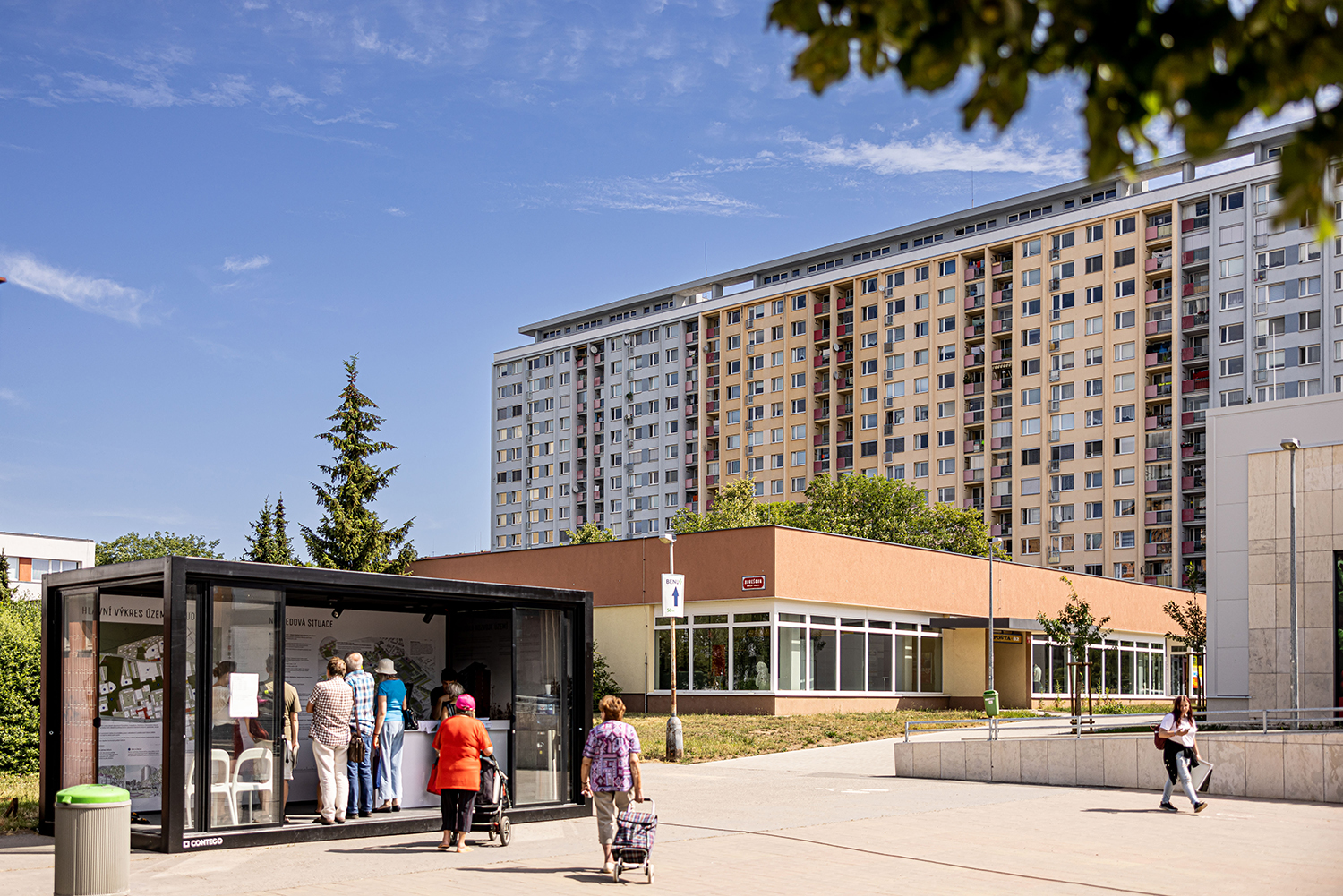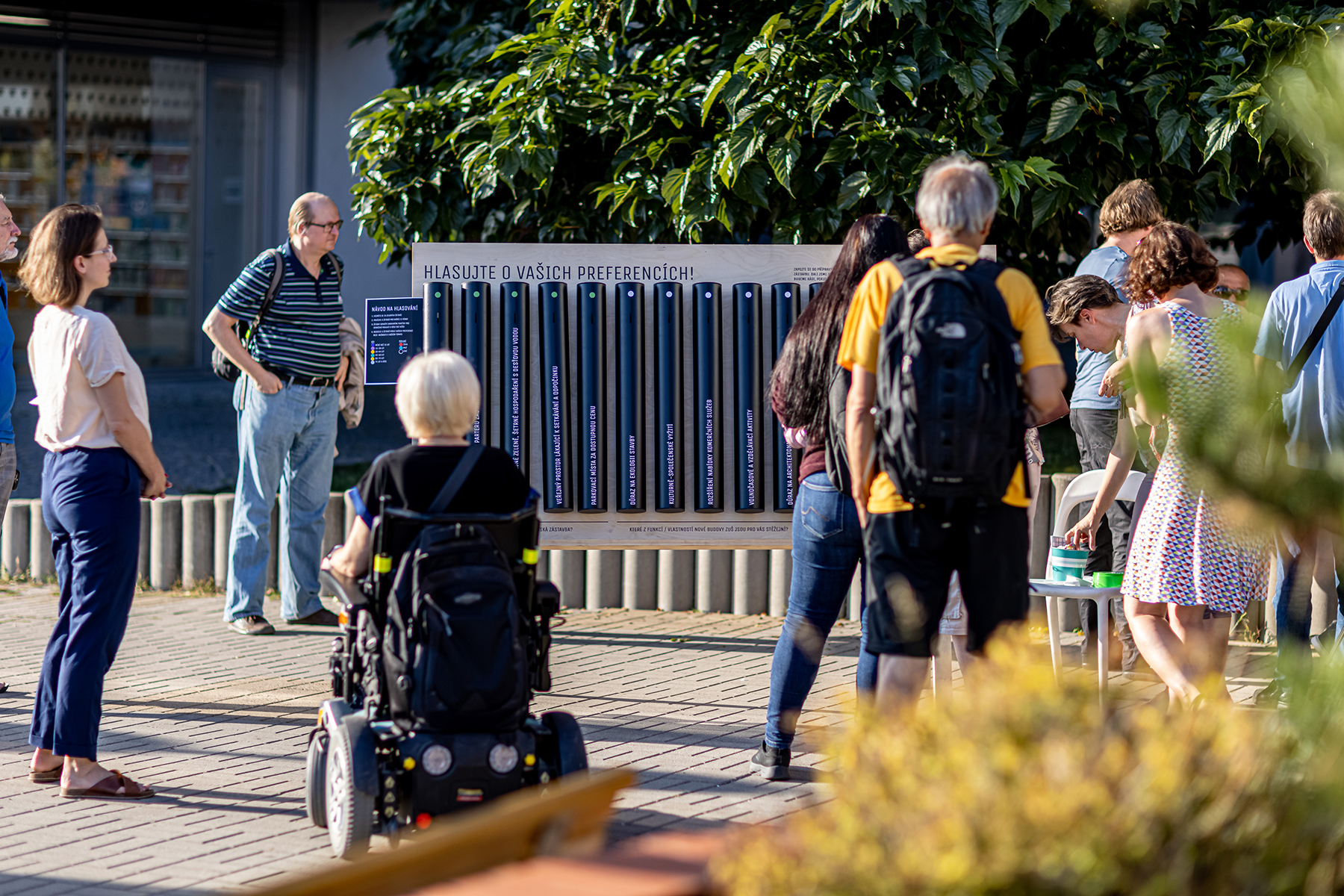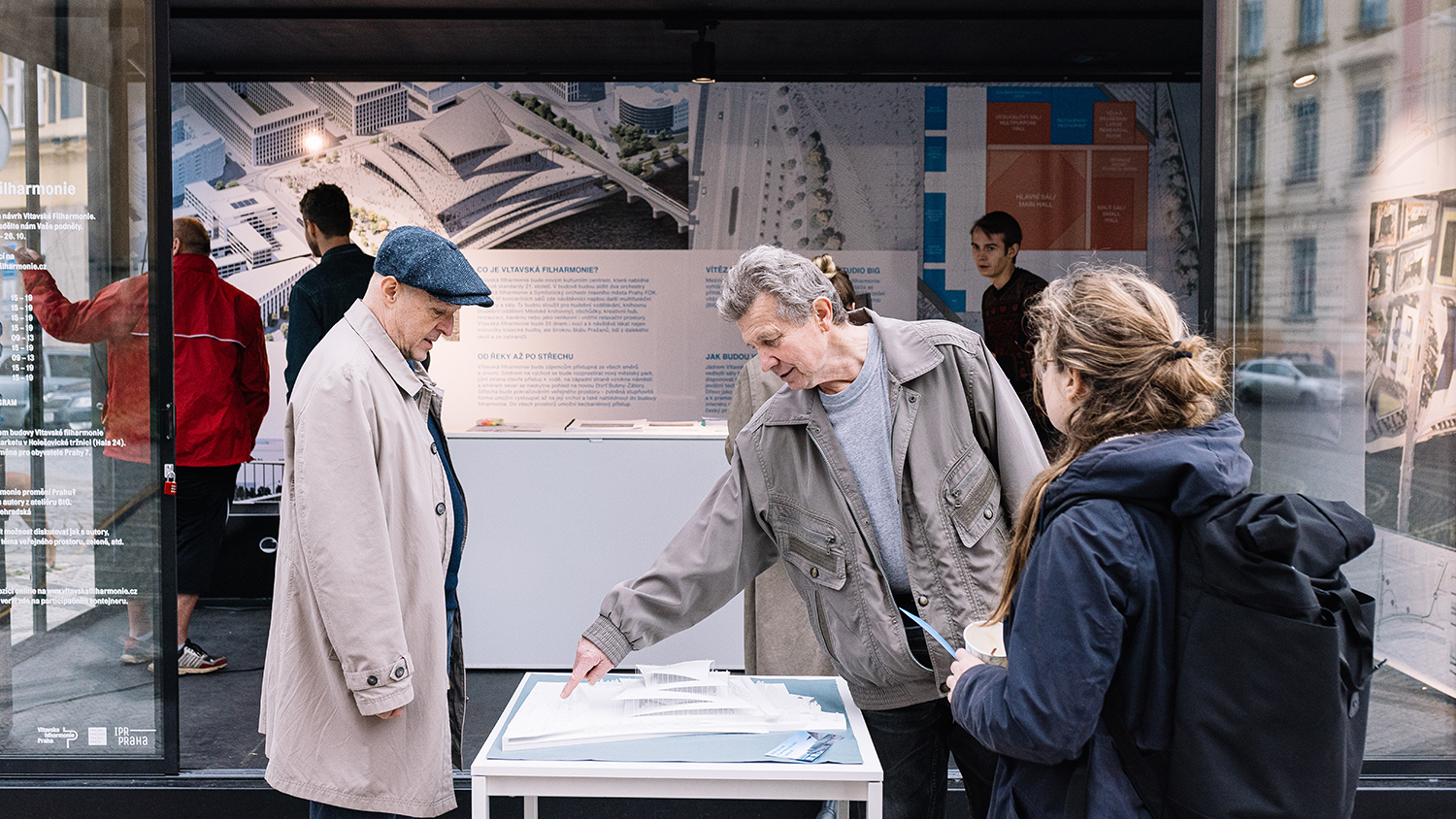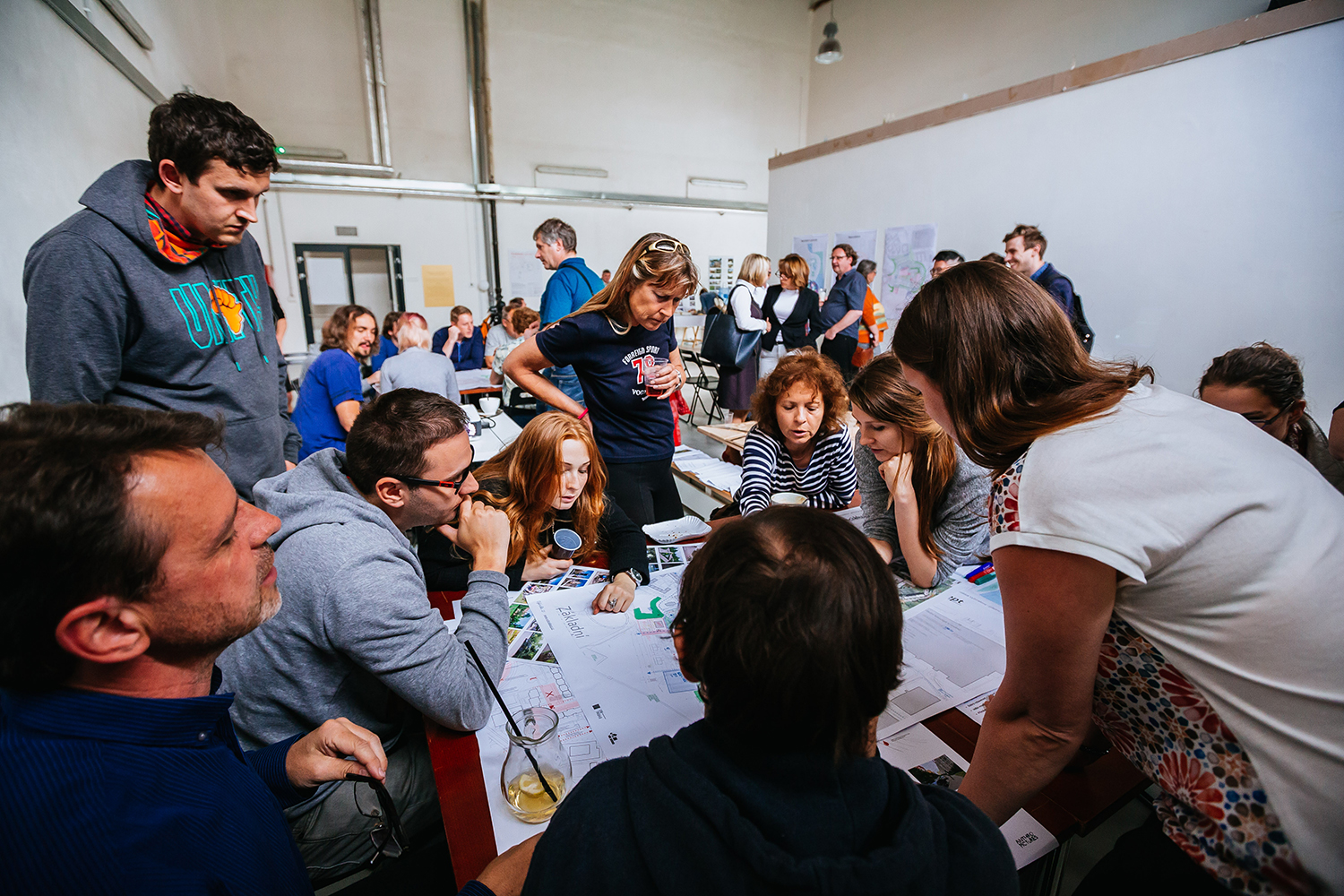Regaining a sense of belonging
Places from Spaces
Creating places from spaces: a complete participation toolkit for building Prague’s future together
Places from spaces. Under the shadow of 50 years of communism, fear of participating still pervades Czech society. With our series of participatory planning measures, we aim to empower the residents of Prague to embrace the important role they play in developing the city and their own communities. Why? To foster a sense of ownership, responsibility, and belonging, where everyone feels included, respected, and heard, in a fantastic city that lives up to its full potential.
EU Member State, Western Balkans or Ukraine
Czechia
Local
Prague, Czech Republic
No
No
Mainly urban
It refers to other types of transformations (soft investment)
Yes
2022-04-30
No
No
No
As a representative of an organisation
Under the umbrella of “Creating Places from Spaces”, we are presenting a package of measures that actively involves the citizens of Prague in shaping the city. We aim to empower people to embrace the important role they play in developing the city and their communities, thus fostering a sense of ownership, responsibility, and belonging. Under the shadow of 50 years of communism, fear of participating still pervades Czech society. With the measures described below, IPR Prague is trying to both improve planning in the city, and to gradually foster a culture shift where everyone feels included, respected, and heard. The package includes:
- The Center for Architecture and Metropolitan Planning (CAMP) on the premises of IPR Prague is a central platform for presentation, discussion, and participation. CAMP is a unique space that hosts exhibits, lectures, workshops, conferences, screenings, and children's activities with the aim of making planning and architecture more accessible. The space embodies the ideals of public participation and discourse and has become Prague’s premier destination for information about development and planning in the city.
-The “Participatory Planning Coordinators” program, which aims to establish participation in Prague as a standard, entailed the creation of “participation coordinators” in 10 city districts, and included two years of training and support. The program served as inspiration for other Czech and Slovak cities, and spawned activities such as a “Participatory Hackathon,” described elsewhere in the application.
-The "Participatory Planning BaseCamp" online platform is a guide for participatory planning. This is the follow-on to our Manual of Public Participation, which was created in 2016 as the first comprehensive methodology for participatory planning in Czech.
- Our package also includes other methods to engage citizens in planning, such as a refurbished shipping container that serves as a traveling “participation portal”.
- The Center for Architecture and Metropolitan Planning (CAMP) on the premises of IPR Prague is a central platform for presentation, discussion, and participation. CAMP is a unique space that hosts exhibits, lectures, workshops, conferences, screenings, and children's activities with the aim of making planning and architecture more accessible. The space embodies the ideals of public participation and discourse and has become Prague’s premier destination for information about development and planning in the city.
-The “Participatory Planning Coordinators” program, which aims to establish participation in Prague as a standard, entailed the creation of “participation coordinators” in 10 city districts, and included two years of training and support. The program served as inspiration for other Czech and Slovak cities, and spawned activities such as a “Participatory Hackathon,” described elsewhere in the application.
-The "Participatory Planning BaseCamp" online platform is a guide for participatory planning. This is the follow-on to our Manual of Public Participation, which was created in 2016 as the first comprehensive methodology for participatory planning in Czech.
- Our package also includes other methods to engage citizens in planning, such as a refurbished shipping container that serves as a traveling “participation portal”.
Participation
Paradigm shift
Inclusion
Sustainability
Active citizenship
If sustainability can be understood as “meeting the needs of the present without compromising the ability of future generations to meet their own needs,” as defined by McGill University, this project is exemplary.
CAMP is an open platform, both physical and online, for lectures and discussions about future projects and investments in Prague, but also about sustainability, inclusivity, history, and the future of architecture and urban planning. Concepts and data are often presented digitally, and through the events held in this unique, multi-functional space, we aim to inspire people to co-design and co-create more sustainable cities and co-exist in more sustainable ways. Examples of CAMP events related to sustainability include the "Urban Talks" series with guests including Carlo Ratti and Carlos Moreno, "For a Sustainable and Neighborly Prague", and the "Rethink Architecture" series. It is worth noting that the space was also used to host the first NEB event in Prague at the very beginning of the NEB movement in 2020, where much of the discussion focused around circularity. The adaptability of CAMP guarantees that this platform will be available to continue to respond to the needs of future generations.
“Social sustainability” is key in the other participatory measures we have included as part of this application. In order to foster a sense of belonging and community, citizens must build social capital – cohesive and supportive, and thus socially sustainable communities. Through our efforts to get more people involved in the planning of their neighborhoods by bringing opportunities for participation to their doorsteps (by means such as our traveling participation container, described above), we provide the means by which residents can build a resilient and sustainable society from the bottom up. Participatory planning as practiced by IPR Prague fosters dialogue as an effective, transparent, and meaningful path to a sustainable and resilient society.
CAMP is an open platform, both physical and online, for lectures and discussions about future projects and investments in Prague, but also about sustainability, inclusivity, history, and the future of architecture and urban planning. Concepts and data are often presented digitally, and through the events held in this unique, multi-functional space, we aim to inspire people to co-design and co-create more sustainable cities and co-exist in more sustainable ways. Examples of CAMP events related to sustainability include the "Urban Talks" series with guests including Carlo Ratti and Carlos Moreno, "For a Sustainable and Neighborly Prague", and the "Rethink Architecture" series. It is worth noting that the space was also used to host the first NEB event in Prague at the very beginning of the NEB movement in 2020, where much of the discussion focused around circularity. The adaptability of CAMP guarantees that this platform will be available to continue to respond to the needs of future generations.
“Social sustainability” is key in the other participatory measures we have included as part of this application. In order to foster a sense of belonging and community, citizens must build social capital – cohesive and supportive, and thus socially sustainable communities. Through our efforts to get more people involved in the planning of their neighborhoods by bringing opportunities for participation to their doorsteps (by means such as our traveling participation container, described above), we provide the means by which residents can build a resilient and sustainable society from the bottom up. Participatory planning as practiced by IPR Prague fosters dialogue as an effective, transparent, and meaningful path to a sustainable and resilient society.
A selection of photos from CAMP, included with this application, attest to the singular aesthetic quality of this unique space. Housed in the heart of Prague, on the ground floor of one of three black “box” buildings designed by Czech Brutalist architect Karel Prager, the space features an impressive exhibition hall, amphitheater, study room with hundreds of books and publications about architecture, urban planning and design, a café, and a conference room. The 200 m2 exhibition hall includes a 25m-long panoramic projection screen, where visitors can enjoy a 1:1 simulation of the city. The screen is used for various large screen projections and allows us to experiment with interactive exhibition formats to best convey our message.
Designed and maintained by world-class architects, planners, and design professionals, the space is multi-functional and flexible. The three to four large exhibitions that are held in the space annually, interlaced with many smaller exhibitions and events, are all related to planning or architecture in Prague. The events are designed so as to embrace a multimedia approach and engage the visitor from the beginning to the end. All events held at CAMP are free of charge and accommodate individuals with various disabilities to the extent possible.
CAMP and IPR Prague also use a very clean, simple, and easily recognizable visual identity in all events, outputs, and communication to create a memorable brand that citizens will associate with participation in urban planning.
In addition, through the use of participative planning methods in our projects and through the training of participation coordinators throughout the city districts, we are ensuring that the public has a chance to influence the quality of their own experience of moving through and living in the city.
Designed and maintained by world-class architects, planners, and design professionals, the space is multi-functional and flexible. The three to four large exhibitions that are held in the space annually, interlaced with many smaller exhibitions and events, are all related to planning or architecture in Prague. The events are designed so as to embrace a multimedia approach and engage the visitor from the beginning to the end. All events held at CAMP are free of charge and accommodate individuals with various disabilities to the extent possible.
CAMP and IPR Prague also use a very clean, simple, and easily recognizable visual identity in all events, outputs, and communication to create a memorable brand that citizens will associate with participation in urban planning.
In addition, through the use of participative planning methods in our projects and through the training of participation coordinators throughout the city districts, we are ensuring that the public has a chance to influence the quality of their own experience of moving through and living in the city.
Our project, centered on inclusion, aims to foster an environment where diverse voices and perspectives are heard and actively integrated into the fabric of city planning and development.
The efforts described in this application are all geared towards mainstreaming public involvement in urban planning in Prague. The Manual of Public Participation and its extended online version are designed as a comprehensive guide for all stakeholders - cities and city institutions, developers and investors, NGOs and active citizens - emphasizing the crucial role of inclusive practices in shaping urban landscapes. Creating the position of participatory coordinators within municipal districts brings participation closer to citizens and local organizations, and connects individual municipal departments.
Realizing that accessibility is key to inclusive participation, we also adopted the motto "if you can’t come to us, we will come to you.” By means of our traveling participation container, we gain access to people who would not usually get involved in participatory activities. The container serves as a mobile hub for disseminating information, answering queries, and facilitating the submission of feedback from the public.
Furthermore, we try to make the events held at CAMP as accessible and affordable as possible. The vast majority of our programming is free, and we livestream all lectures and talks to make them available for anyone in the world. Shortly after the construction of the space, we engaged two dedicated inclusivity coordinators, who help us ensure that the facility is truly open to all. All events regarding the future of Prague are simultaneously translated into Czech sign language and subtitled. The CAMP premises are barrier-free and equipped with an induction loop. Orientation throughout the space is facilitated through pictograms, haptic models, and special guided tours to provide information in alternative formats. Service dogs are always welcome.
The efforts described in this application are all geared towards mainstreaming public involvement in urban planning in Prague. The Manual of Public Participation and its extended online version are designed as a comprehensive guide for all stakeholders - cities and city institutions, developers and investors, NGOs and active citizens - emphasizing the crucial role of inclusive practices in shaping urban landscapes. Creating the position of participatory coordinators within municipal districts brings participation closer to citizens and local organizations, and connects individual municipal departments.
Realizing that accessibility is key to inclusive participation, we also adopted the motto "if you can’t come to us, we will come to you.” By means of our traveling participation container, we gain access to people who would not usually get involved in participatory activities. The container serves as a mobile hub for disseminating information, answering queries, and facilitating the submission of feedback from the public.
Furthermore, we try to make the events held at CAMP as accessible and affordable as possible. The vast majority of our programming is free, and we livestream all lectures and talks to make them available for anyone in the world. Shortly after the construction of the space, we engaged two dedicated inclusivity coordinators, who help us ensure that the facility is truly open to all. All events regarding the future of Prague are simultaneously translated into Czech sign language and subtitled. The CAMP premises are barrier-free and equipped with an induction loop. Orientation throughout the space is facilitated through pictograms, haptic models, and special guided tours to provide information in alternative formats. Service dogs are always welcome.
Our entire project centers on involving citizens and civil society in urban planning. By using various methods for this purpose, including CAMP as a physical space where we can involve people, the participation coordinators program which enables us to teach others how to employ participative methods, and various other community planning methods such as the traveling participation container, among others, citizens and civil society are granted access to quality information for joint decision-making.
These activities bring benefits for everyone, including: a strengthening of trust between public institutions and citizens, a greater sense of belonging within the community and within specific localities, development of democratic competencies, and, of course, more informed and higher-quality proposals for specific projects proposed for the city– participative methods generate ideas for the improvement of both private and public sector development.
CAMP’s diverse program, which includes lectures by foreign experts and various types of educational events for children and adults, helps educate the Prague populace in architecture and city planning, and brings best practices directly to the city.
Feedback is a crucial element of public participation and any project, thus we strive to gather feedback from all stakeholders. Based on the information we receive through feedback forms distributed at CAMP and online (we collect a Net Promoter Score, showing whether visitors would recommend CAMP to others), informal discussions with visitors to CAMP, a comprehensive evaluation of the participation coordinators project as well as collection of feedback from the coordinators themselves and city district representatives, and a semi-annual survey of Prague residents on the functioning and knowledge of CAMP and IPR Prague activities, we are able to constantly adjust our activities and methods; this is a continuous process of mutual learning.
These activities bring benefits for everyone, including: a strengthening of trust between public institutions and citizens, a greater sense of belonging within the community and within specific localities, development of democratic competencies, and, of course, more informed and higher-quality proposals for specific projects proposed for the city– participative methods generate ideas for the improvement of both private and public sector development.
CAMP’s diverse program, which includes lectures by foreign experts and various types of educational events for children and adults, helps educate the Prague populace in architecture and city planning, and brings best practices directly to the city.
Feedback is a crucial element of public participation and any project, thus we strive to gather feedback from all stakeholders. Based on the information we receive through feedback forms distributed at CAMP and online (we collect a Net Promoter Score, showing whether visitors would recommend CAMP to others), informal discussions with visitors to CAMP, a comprehensive evaluation of the participation coordinators project as well as collection of feedback from the coordinators themselves and city district representatives, and a semi-annual survey of Prague residents on the functioning and knowledge of CAMP and IPR Prague activities, we are able to constantly adjust our activities and methods; this is a continuous process of mutual learning.
All aspects of the project presented here were developed with stakeholders at various levels. For instance, before designing the participation coordinators program, we conducted in-depth research with employees and politicians from nearly all 57 Prague city districts. The goal was to gather data about the needs for public participation in these districts, which we continued to involve in co-designing the program. Some of the shortfalls they helped us identify were a lack of awareness of participatory planning, a low or non-existent culture of cooperation within district administrations, and low knowledge of participation tools and methods. The participation coordinators program fills in these gaps and helps districts with public involvement, thus helping to decentralize planning and empower local communities.
The creation of the Participation Manual, which underpins our participation activities and has since been adapted into the online Participatory Planning BaseCamp, relied heavily on consultations with the central city government, city districts, local academia, and NGOs, in order to create a document that would serve the unique context of Prague and respond to the needs of various levels of stakeholders.
The creation of CAMP to fill the need for a physical space to meet, learn, and discuss the future of Prague would not be possible without the support of the city administration and city politicians. The idea for an accessible planning and architecture “base camp” for Prague was born in 2016, and it took strong political will for its final approval in 2017. As far as implementation, over the six years of its existence, CAMP has become a favored venue for local, regional, and even national government officials and politicians to join discussions that have effects far beyond the borders of Prague. Internationally recognized “stars” of urban planning, including Jeanette Sadik-Khan, Jan Gehl, and Matus Vallo have used the venue to foster dialogue.
The creation of the Participation Manual, which underpins our participation activities and has since been adapted into the online Participatory Planning BaseCamp, relied heavily on consultations with the central city government, city districts, local academia, and NGOs, in order to create a document that would serve the unique context of Prague and respond to the needs of various levels of stakeholders.
The creation of CAMP to fill the need for a physical space to meet, learn, and discuss the future of Prague would not be possible without the support of the city administration and city politicians. The idea for an accessible planning and architecture “base camp” for Prague was born in 2016, and it took strong political will for its final approval in 2017. As far as implementation, over the six years of its existence, CAMP has become a favored venue for local, regional, and even national government officials and politicians to join discussions that have effects far beyond the borders of Prague. Internationally recognized “stars” of urban planning, including Jeanette Sadik-Khan, Jan Gehl, and Matus Vallo have used the venue to foster dialogue.
We believe that in the preparation and implementation of participatory urban planning projects, a highly interdisciplinary approach is essential. For this reason, various disciplines were consulted during all phases and components of our project, including urban planners, architects, geographers, sociologists, anthropologists, public officials, project managers, graphic designers, PR consultants, technical engineers, and, perhaps most importantly, local residents.
For instance, when the participation coordinators project was first conceived, we involved a program coordinator, sociologist, participation experts, and experts on evaluation, in addition to the internal IPR Prague team of participators. The program coordinator played a crucial role at the outset, helping to set up the entire program. Evaluation experts were involved in both the creation and implementation of the project. During program implementation, we collaborated closely with a team of sociologists, participators, and education specialists, who assisted us in executing the coordinator training program.
During the creation of the Manual of Public Participation, the precursor to the BaseCamp participatory portal, we involved urban planners, communicators, architects, external participation specialists, and a sociologist as consultants for the manual's content.
During the formulation of the concept for CAMP, we held consultations with the brains behind the Danish Architecture Center, various city-run galleries, architects, and planners. The idea for a place where people could learn about plans for the city’s future and have a chance to engage with planners and architects was born out of the IPR Prague communications office, which is staffed with experts in PR, marketing, and other communications fields. Various experts continue to provide feedback regularly, and we work closely with an inclusivity coordinator who focuses on addressing the needs for people with various disabilities.
For instance, when the participation coordinators project was first conceived, we involved a program coordinator, sociologist, participation experts, and experts on evaluation, in addition to the internal IPR Prague team of participators. The program coordinator played a crucial role at the outset, helping to set up the entire program. Evaluation experts were involved in both the creation and implementation of the project. During program implementation, we collaborated closely with a team of sociologists, participators, and education specialists, who assisted us in executing the coordinator training program.
During the creation of the Manual of Public Participation, the precursor to the BaseCamp participatory portal, we involved urban planners, communicators, architects, external participation specialists, and a sociologist as consultants for the manual's content.
During the formulation of the concept for CAMP, we held consultations with the brains behind the Danish Architecture Center, various city-run galleries, architects, and planners. The idea for a place where people could learn about plans for the city’s future and have a chance to engage with planners and architects was born out of the IPR Prague communications office, which is staffed with experts in PR, marketing, and other communications fields. Various experts continue to provide feedback regularly, and we work closely with an inclusivity coordinator who focuses on addressing the needs for people with various disabilities.
Of the participation measures being presented in this application, it is the complexity, sophistication, and scope of the project of participation coordinators in city districts that is the most unique and innovative– and not only in the Czech Republic. Prague is divided into 57 city districts, and the idea of partially decentralizing the public participation process by training local coordinators just makes sense. City district employees know their neighborhoods and residents, and putting them on the front lines of participation efforts works. It is also a testament to the success of IPR Prague public participation efforts as a whole that this program has been well-received by the districts.
To continue to innovate within the coordinators program, we recently held the first ever “participatory hackathon,” at CAMP. During this two-day event, 38 employees from participation or strategic planning departments throughout the Czech Republic and Slovakia competed to design a participatory process within the framework of real-life planning challenges. The event showcased the capabilities of participation coordinators, and strengthened the network between them.
While there are a number of architecture centers throughout the world, CAMP is innovative in its ability to reach many different audiences, and it is the first of its kind in the Central/Eastern European context. From discovery workshops for children to public discussions with world-renowned architects, all within an accessible facility, the space truly has something for everyone. Given our visitorship and feedback we’ve received, we know that CAMP is an inspiration to long-standing architecture centers around the world. Our innovative map portal, prahazitra.camp, serves as an overview of 800 public and private construction projects within the city of Prague, with the purpose of providing information on the development of the city and making future development plans more transparent.
To continue to innovate within the coordinators program, we recently held the first ever “participatory hackathon,” at CAMP. During this two-day event, 38 employees from participation or strategic planning departments throughout the Czech Republic and Slovakia competed to design a participatory process within the framework of real-life planning challenges. The event showcased the capabilities of participation coordinators, and strengthened the network between them.
While there are a number of architecture centers throughout the world, CAMP is innovative in its ability to reach many different audiences, and it is the first of its kind in the Central/Eastern European context. From discovery workshops for children to public discussions with world-renowned architects, all within an accessible facility, the space truly has something for everyone. Given our visitorship and feedback we’ve received, we know that CAMP is an inspiration to long-standing architecture centers around the world. Our innovative map portal, prahazitra.camp, serves as an overview of 800 public and private construction projects within the city of Prague, with the purpose of providing information on the development of the city and making future development plans more transparent.
The participation package presented here embraces a systemic change approach to foster a culture of participatory governance. Quoting Mark Connolly from the University of Wisconsin-Madison, “systemic change occurs when change reaches all or most parts of a system, thus affecting the general behavior of the entire system.” Here, this happens through the targeting of different levels of public administration simultaneously - the city government, the individual city districts, as well as the public and local stakeholders. By engaging with and educating these actors about the importance of active participation and providing insights into the intricacies of participatory urban planning, we aim to enhance their capacity to contribute meaningfully.
By offering specialized training and resources, we empower the city administration to embrace participatory practices, facilitating a more inclusive decision-making process at every level. We work closely with city officials and local authorities, advocating for a more open and collaborative approach to urban development.
Simultaneously, our educational endeavors cater to the public, enabling them to comprehend the dynamics of urban planning and encouraging their active involvement. Through workshops, forums, and accessible events, we equip citizens with the necessary tools and knowledge to engage in shaping the future of their communities. Our emphasis on education and awareness cultivates a deeper understanding of the city's functioning and fosters a sense of ownership and responsibility.
By fostering a symbiotic relationship between the public administration and the citizens, our systemic change approach nurtures a collaborative ecosystem that promotes transparency, inclusivity, and sustainable development. Our participation package serves as a catalyst in this transformative process, supporting a shared vision of an engaged and empowered community that actively contributes to the betterment of the city as a whole.
By offering specialized training and resources, we empower the city administration to embrace participatory practices, facilitating a more inclusive decision-making process at every level. We work closely with city officials and local authorities, advocating for a more open and collaborative approach to urban development.
Simultaneously, our educational endeavors cater to the public, enabling them to comprehend the dynamics of urban planning and encouraging their active involvement. Through workshops, forums, and accessible events, we equip citizens with the necessary tools and knowledge to engage in shaping the future of their communities. Our emphasis on education and awareness cultivates a deeper understanding of the city's functioning and fosters a sense of ownership and responsibility.
By fostering a symbiotic relationship between the public administration and the citizens, our systemic change approach nurtures a collaborative ecosystem that promotes transparency, inclusivity, and sustainable development. Our participation package serves as a catalyst in this transformative process, supporting a shared vision of an engaged and empowered community that actively contributes to the betterment of the city as a whole.
Most of the components of our “participation package” can be transferred and replicated anywhere. They can be particularly beneficial to former Soviet Bloc countries, which share a similar history as ours and are facing similar realities today as a result.
In particular, the program of participation coordinators, a comprehensive system of individual steps describing how to systematically introduce and train key employees in participatory methods, and how to integrate them into diverse city districts, lends itself to replication. Thanks to the extensive evaluation carried out after the two-year pilot project, we are able to share not only the project methodology and its benefits, but also the risks and challenges, together with recommendations on how to prevent them. This program has been replicated in Slovakia, where a system of participation coordinators, managed by the Ministry of the Interior, has been implemented on the regional level.
Our Manual for Public Participation has been by adopted or adapted by other cities in the Czech Republic, and its successor, the online BaseCamp platform, is also highly replicable, as it provides information on how to train participation coordinators, details case studies of our participatory projects, and makes additional materials related to participatory planning accessible.
The participatory hackathon that we organized for 38 participants from the Czech Republic and Slovakia is testament to our efforts to actively build connections with other Czech cities, as well as with neighboring countries, to share our knowledge and experience.
CAMP can and should be an inspiration for all cities, showing them benefits of opening city planning up to the public, creatively educating residents on planning topics, and not fearing initial criticism. CAMP’s prahazitra.camp map portal with its summary of 800 development projects planned for the city, described above, is certainly replicable.
In particular, the program of participation coordinators, a comprehensive system of individual steps describing how to systematically introduce and train key employees in participatory methods, and how to integrate them into diverse city districts, lends itself to replication. Thanks to the extensive evaluation carried out after the two-year pilot project, we are able to share not only the project methodology and its benefits, but also the risks and challenges, together with recommendations on how to prevent them. This program has been replicated in Slovakia, where a system of participation coordinators, managed by the Ministry of the Interior, has been implemented on the regional level.
Our Manual for Public Participation has been by adopted or adapted by other cities in the Czech Republic, and its successor, the online BaseCamp platform, is also highly replicable, as it provides information on how to train participation coordinators, details case studies of our participatory projects, and makes additional materials related to participatory planning accessible.
The participatory hackathon that we organized for 38 participants from the Czech Republic and Slovakia is testament to our efforts to actively build connections with other Czech cities, as well as with neighboring countries, to share our knowledge and experience.
CAMP can and should be an inspiration for all cities, showing them benefits of opening city planning up to the public, creatively educating residents on planning topics, and not fearing initial criticism. CAMP’s prahazitra.camp map portal with its summary of 800 development projects planned for the city, described above, is certainly replicable.
In the contemporary global landscape, societal divisions, exacerbated by international conflicts and the pervasive influence of social media, pose a significant global challenge. The resulting erosion of trust in institutions and the fraying of social cohesion underline the need for proactive measures to reinforce community bonds and bolster faith in local governance structures.
By emphasizing participatory governance and inclusive decision-making processes at the community level, we strive to foster a sense of belonging and ownership among residents, thereby strengthening social cohesion and a sense of trust in local institutions. Through our project, we focus on educating all stakeholders and provide them with opportunities to nurture social resilience, foster community engagement, and dismantle tensions within local communities.
We recognize the fundamental right to the city and emphasize the role of participatory planning in promoting inclusivity and unity. By actively involving the public in planning and decision-making processes, we cultivate a culture of active citizenship and collaborative problem-solving, promoting a sense of shared responsibility and ownership among community members. In our participatory projects as well as through events held at CAMP, we facilitate constructive dialogues between citizens and policymakers, bridging the gap between their perspectives and leading them to mutual understanding. We believe that mutual support and understanding are the cornerstones of a resilient and cohesive urban society.
Furthermore, we believe participatory and community development can serve as a tool for mitigation and adaptation of climate change. For instance, CAMP aims to spread knowledge about sustainable planning; sustainability and climate resilience are "coded" into our programming. From our Urban Talks to Rethink Architecture lectures, we focus on inviting people who are actively taking steps to achieve a more sustainable future.
By emphasizing participatory governance and inclusive decision-making processes at the community level, we strive to foster a sense of belonging and ownership among residents, thereby strengthening social cohesion and a sense of trust in local institutions. Through our project, we focus on educating all stakeholders and provide them with opportunities to nurture social resilience, foster community engagement, and dismantle tensions within local communities.
We recognize the fundamental right to the city and emphasize the role of participatory planning in promoting inclusivity and unity. By actively involving the public in planning and decision-making processes, we cultivate a culture of active citizenship and collaborative problem-solving, promoting a sense of shared responsibility and ownership among community members. In our participatory projects as well as through events held at CAMP, we facilitate constructive dialogues between citizens and policymakers, bridging the gap between their perspectives and leading them to mutual understanding. We believe that mutual support and understanding are the cornerstones of a resilient and cohesive urban society.
Furthermore, we believe participatory and community development can serve as a tool for mitigation and adaptation of climate change. For instance, CAMP aims to spread knowledge about sustainable planning; sustainability and climate resilience are "coded" into our programming. From our Urban Talks to Rethink Architecture lectures, we focus on inviting people who are actively taking steps to achieve a more sustainable future.
The results, outcomes, and impacts of our package are best described in actual numbers.
CAMP:
-Over 780,000 visitors in the first five years of CAMP’s existence, and growing each year.
-Over 20 exhibitions and more than 500 talks, lectures, presentations, and other programs for the public.
15,000 readers of the online CAMP magazine and viewers of camp.tv.
Participation coordinators:
-10 participation coordinator positions created across 12 city districts.
-8 education modules formulated as part of a training system to train participation coordinators at 17 training sessions and 4 workshops.
-38 participation coordinators engaged in the participation hackathon.
-Based on an external evaluation, all city districts in the participation coordinators project noted an increase in their participation competencies after the inclusion of a participation coordinator.
-60% of pilot districts agreed that the project brought a unified approach to project planning to the district.
-70% of pilot districts noted an improvement in the allocation of financial resources for project planning.
-36 projects have been “participated” by participation coordinators, including a design competition, conceptual study, strategic plans, and participatory budgeting.
Other participation measures:
-Over 5000 visitors during 37 stops of the traveling participation container as part of the campaign for the new Prague Metropolitan Plan.
-Completion of online training platform, “BaseCamp of Participatory Planning” to make participation fundamentals more accessible.
-Ongoing development of the portal showing future Prague projects, leading to increased transparency of city development.
We are confident that we are gradually changing attitudes towards planning and participation in Prague, while inspiring other cities. Our ultimate goal is to redefine the relationship between the government, stakeholders, and citizens to mainstream participation in planning the future of our city.
CAMP:
-Over 780,000 visitors in the first five years of CAMP’s existence, and growing each year.
-Over 20 exhibitions and more than 500 talks, lectures, presentations, and other programs for the public.
15,000 readers of the online CAMP magazine and viewers of camp.tv.
Participation coordinators:
-10 participation coordinator positions created across 12 city districts.
-8 education modules formulated as part of a training system to train participation coordinators at 17 training sessions and 4 workshops.
-38 participation coordinators engaged in the participation hackathon.
-Based on an external evaluation, all city districts in the participation coordinators project noted an increase in their participation competencies after the inclusion of a participation coordinator.
-60% of pilot districts agreed that the project brought a unified approach to project planning to the district.
-70% of pilot districts noted an improvement in the allocation of financial resources for project planning.
-36 projects have been “participated” by participation coordinators, including a design competition, conceptual study, strategic plans, and participatory budgeting.
Other participation measures:
-Over 5000 visitors during 37 stops of the traveling participation container as part of the campaign for the new Prague Metropolitan Plan.
-Completion of online training platform, “BaseCamp of Participatory Planning” to make participation fundamentals more accessible.
-Ongoing development of the portal showing future Prague projects, leading to increased transparency of city development.
We are confident that we are gradually changing attitudes towards planning and participation in Prague, while inspiring other cities. Our ultimate goal is to redefine the relationship between the government, stakeholders, and citizens to mainstream participation in planning the future of our city.
Both
{Empty}
Yes
Yes
Yes
Yes
Yes
Yes
Yes

